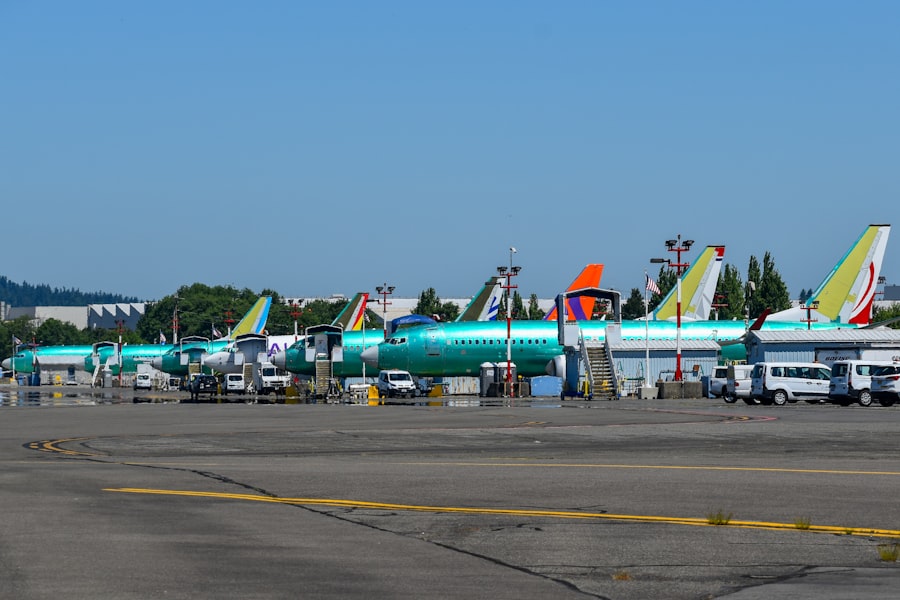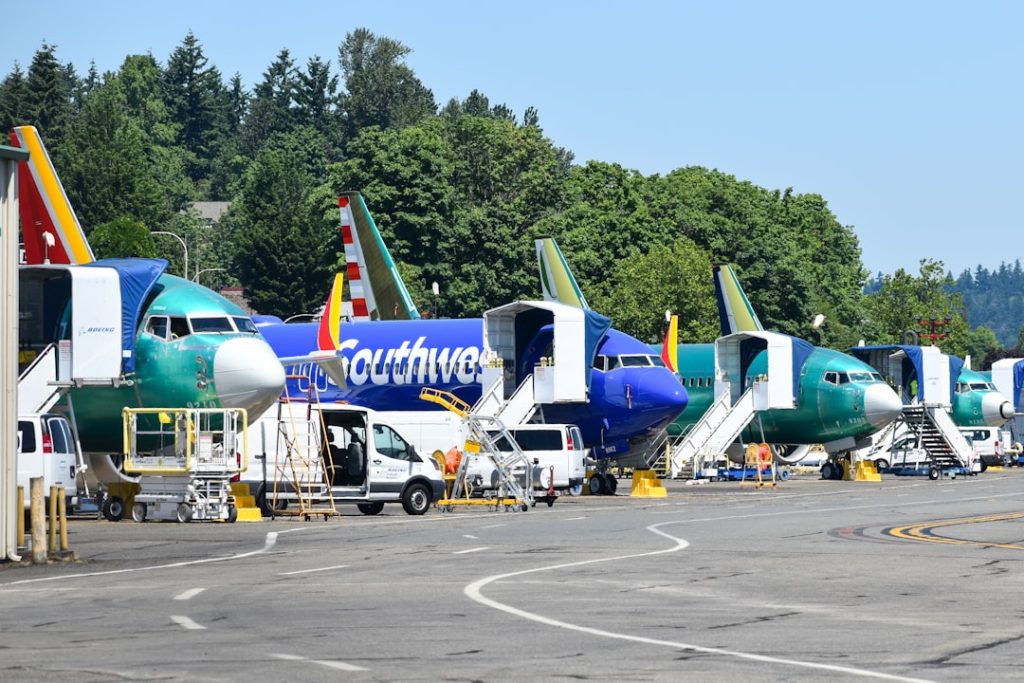The Boeing 737 Max represents a significant chapter in the history of commercial aviation, embodying both the aspirations and challenges of modern aircraft design. Launched as the latest iteration of the Boeing 737 family, the Max was intended to compete with rival aircraft, particularly the Airbus A320neo. With its promise of enhanced fuel efficiency, advanced technology, and improved passenger comfort, the 737 Max was positioned as a game-changer in the single-aisle market.
However, its journey has been marred by tragedy and controversy, leading to a complex narrative that intertwines innovation with critical safety concerns. The 737 Max was designed to meet the evolving demands of airlines and passengers alike. With a focus on reducing operational costs while maximizing performance, Boeing aimed to provide an aircraft that could operate efficiently on short to medium-haul routes.
The introduction of new engines, aerodynamic improvements, and advanced avionics were all part of a strategy to ensure that the 737 Max would not only meet but exceed the expectations of airlines in a highly competitive market. However, the aircraft’s development was not without its hurdles, as it faced scrutiny from regulators and the public alike, setting the stage for a tumultuous journey ahead.
Key Takeaways
- The 737 Max is a series of narrow-body aircraft developed by Boeing to compete with the Airbus A320neo.
- The development and design of the 737 Max focused on fuel efficiency and cost savings, utilizing larger engines and advanced aerodynamics.
- Safety concerns arose after two fatal crashes involving the 737 Max, leading to its grounding worldwide in 2019.
- Changes and improvements made to the 737 Max include updates to the flight control system and additional pilot training requirements.
- The future prospects for the 737 Max remain uncertain as Boeing works to regain trust and address competition from Airbus and other manufacturers.
Development and design of the 737 Max
The development of the 737 Max began in earnest in 2011, as Boeing sought to modernize its venerable 737 line, which had been in service since the late 1960s. The decision to create a new model rather than a completely new aircraft was driven by market demand for a more fuel-efficient option that could be introduced relatively quickly. The 737 Max features larger, more efficient LEAP-1B engines developed by CFM International, which are designed to provide a significant reduction in fuel consumption compared to previous models.
This focus on efficiency was crucial for airlines looking to cut costs in an increasingly competitive environment. In addition to the new engines, the design of the 737 Max incorporated several aerodynamic enhancements. The winglets were redesigned to improve lift and reduce drag, contributing to overall fuel efficiency.
The aircraft’s fuselage was also optimized for weight reduction while maintaining structural integrity. Inside, the cabin was reconfigured to enhance passenger comfort, featuring larger windows and improved lighting. These design choices were not merely aesthetic; they were integral to Boeing’s strategy of delivering an aircraft that could meet the operational needs of airlines while providing a better experience for passengers.
Safety concerns and the grounding of the 737 Max

Despite its promising design and technological advancements, the 737 Max became embroiled in one of the most significant aviation safety crises in recent history. The aircraft was involved in two catastrophic accidents within five months: Lion Air Flight 610 in October 2018 and Ethiopian Airlines Flight 302 in March 2019. Both crashes resulted in the tragic loss of all aboard and raised serious questions about the safety of the aircraft and the adequacy of its certification process.
Investigations revealed that a key factor in both accidents was a malfunctioning automated flight control system known as MCAS (Maneuvering Characteristics Augmentation System), which was designed to prevent stalls but ultimately contributed to the loss of control. In response to these tragedies, aviation authorities around the world grounded the entire fleet of 737 Max aircraft in March 2019. This unprecedented move highlighted not only the immediate safety concerns but also broader issues regarding regulatory oversight and Boeing’s internal processes.
The grounding had far-reaching implications for airlines that relied on the Max for their operations, leading to significant financial losses and operational disruptions. The crisis prompted calls for greater transparency in aircraft certification and raised questions about Boeing’s corporate culture and its commitment to safety.
Changes and improvements made to the 737 Max
| Changes and Improvements to the 737 Max |
|---|
| Improved Maneuvering Characteristics Augmentation System (MCAS) |
| Upgraded flight control software |
| Enhanced pilot training on the new system |
| Redesigned cockpit alerts and indicators |
| Updated documentation and manuals for operators |
In light of the safety concerns surrounding the 737 Max, Boeing undertook a comprehensive review of the aircraft’s systems and processes. The company worked closely with regulatory bodies such as the Federal Aviation Administration (FAA) to implement necessary changes aimed at addressing the flaws identified during investigations. One of the most significant modifications involved redesigning the MCAS system to enhance its reliability and ensure that pilots had greater control over the aircraft during critical phases of flight.
This included changes to how MCAS received data from sensors and adjustments to its activation thresholds. Additionally, Boeing implemented extensive pilot training enhancements to ensure that crews were well-prepared to handle any potential issues related to MCAS or other systems. This included simulator training that focused on scenarios involving MCAS activation and recovery procedures.
The company also committed to improving communication with airlines and pilots regarding system updates and operational procedures. These changes were crucial not only for regaining regulatory approval but also for restoring confidence among airlines and passengers who had become wary of flying on the Max.
Future prospects for the 737 Max
As Boeing worked diligently to address safety concerns and re-enter the market, the future prospects for the 737 Max began to take shape. With regulatory approvals gradually being granted, airlines started to reintroduce the aircraft into their fleets, signaling a cautious return to service. The demand for single-aisle aircraft remained strong, driven by a recovering global travel market and an increasing need for efficient short-haul operations.
Analysts projected that as air travel rebounded post-pandemic, airlines would continue to seek out fuel-efficient options like the 737 Max. Moreover, Boeing’s commitment to ongoing improvements and transparency could play a pivotal role in shaping public perception and restoring trust in the brand. The company has emphasized its dedication to safety and quality assurance, which may help mitigate some of the skepticism surrounding the aircraft.
Additionally, as airlines look toward sustainability initiatives, the fuel efficiency of the 737 Max positions it favorably against competitors, potentially allowing it to regain market share lost during its grounding.
Competition and challenges for the 737 Max

The competitive landscape for single-aisle aircraft remains fierce, with Airbus continuing to pose a significant challenge through its A320neo family. The A320neo has gained considerable traction among airlines due to its fuel efficiency and operational flexibility, making it a formidable rival for the 737 Max. As airlines evaluate their fleets and consider future purchases, they weigh factors such as performance, cost-effectiveness, and brand reputation—elements that have been influenced by recent events surrounding Boeing.
Furthermore, Boeing faces challenges beyond direct competition with Airbus. The aviation industry is undergoing a transformation driven by technological advancements and changing consumer preferences. Airlines are increasingly focused on sustainability, seeking aircraft that not only meet operational needs but also align with environmental goals.
This shift may lead some airlines to explore alternative options or newer models that promise even greater efficiency or lower emissions than what is currently offered by both Boeing and Airbus.
Public perception and trust in the 737 Max
Public perception of the 737 Max has been significantly impacted by its troubled history. The tragic accidents and subsequent grounding led many passengers to question whether it was safe to fly on this particular model. Trust is a critical component in aviation; passengers must feel confident that they are boarding a safe aircraft operated by well-trained crews.
As airlines began reintroducing the Max into service, they faced an uphill battle in reassuring travelers about its safety. Boeing has recognized this challenge and has taken steps to rebuild trust through transparency and communication. Engaging with stakeholders—including airlines, pilots, regulators, and passengers—has been essential in addressing concerns about safety features and operational protocols.
Additionally, high-profile endorsements from airlines that have successfully returned the Max to service can help bolster public confidence over time. However, restoring trust is a gradual process that requires consistent commitment from Boeing and its partners.
The impact of the 737 Max on Boeing’s future
The saga of the Boeing 737 Max has left an indelible mark on both Boeing as a company and the broader aviation industry. The lessons learned from this experience will likely shape future practices regarding safety oversight, corporate governance, and customer engagement within aerospace manufacturing. As Boeing navigates its path forward, it must balance innovation with accountability while striving to regain its position as a leader in commercial aviation.
The future of Boeing hinges not only on successfully reestablishing confidence in the 737 Max but also on adapting to an evolving market landscape characterized by sustainability demands and technological advancements. By addressing past shortcomings while embracing new opportunities for growth, Boeing can work toward rebuilding its reputation and ensuring that it remains a key player in shaping the future of air travel.


